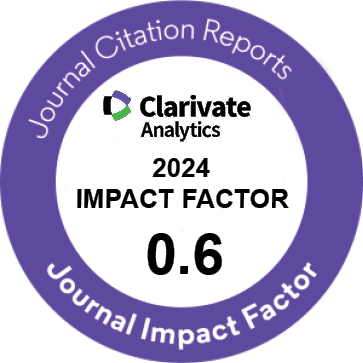| Original Article | |
| Reduction in the Viability of Human Cervical Cancer HeLa Cell Line via Indirect Co-culture With Amniotic Fluid-Derived Mesenchymal Stem Cells | |
| Faramarz Rahmatizadeh1,2,3, Fatima Pashaei-Asl4, Manijeh Mohammadi Dehcheshmeh5, Sara Rahbar6, Maryam LaleAtaei2,7, Shiva Gholizadeh-Ghaleh Aziz8, Jafar Soleimani Rad7,93, 7,9,10 | |
| 1Department of Molecular Medicine, Faculty of Advanced Medical Science, Tabriz University of Medical Science, Tabriz, Iran 2Student Research Committee, Tabriz University of Medical Sciences, Tabriz, Iran 3Drug Applied Research Center, Tabriz University of Medical Sciences, Tabriz, Iran 4Molecular Biology Laboratory, Biotechnology Research Center, Tabriz University of Medical Sciences, Tabriz, Iran 5School of Animal and Veterinary Sciences, the University of Adelaide, Adelaide, Australia 6Department of Reproductive Biology and Anatomical Sciences, Faculty of Medicine, Shahid Beheshti University of Medical Sciences, Tehran, Iran 7Department of Anatomical Sciences, Faculty of Medicine, Tabriz University of Medical Sciences, Tabriz, Iran 8Department of Clinical Biochemistry, Faculty of Medicine, Urmia University of Medical Sciences, Urmia, Iran 9Department of Reproductive Biology, Faculty of Advanced Medical Science, Tabriz University of Medical Science, Tabriz, Iran 10Women?s Reproductive Health Research Center, Tabriz University of Medical Sciences Tabriz, Iran |
|
|
IJWHR 2020; 8: 319-327 DOI: 10.15296/ijwhr.2020.51 Viewed : 3215 times Downloaded : 4363 times. Keywords : Mesenchymal stem cells, HeLa cells, Amniotic fluid, Co-culture, Cell-based therapy |
|
| Full Text(PDF) | Related Articles | |
| Abstract | |
Objectives: This experiment was carried out to evaluate the impacts of unmodified human amniotic fluid-derived mesenchymal stromal/stem cells (hAF-MSCs) on the viability of HeLa cells, as well as the impact of these cells on the expression of common pro-apoptotic and pro-survival genes in tumor cells by establishing an indirect co-culture system. Materials and Methods: To this end, an indirect co-culture system was established, and hAF-MSCs were co-cultured with HeLa cells at a ratio of 1:2 for five days. The cell viability of co-cultured tumor cells was determined after the incubation period. Then, several parameters were examined, including the gene expression of tumor protein 53 (TP53), BCL2-associated X protein (BAX), B-cell lymphoma 2 (BCL-2), and cyclin-dependent kinase inhibitor 1A (CDKN1A). Finally, gene regulatory networks were analyzed as well. Results: The results of this study confirmed that the co-culture of hAF-MSCs with HeLa cells could decrease the viability of tumor cells. The reduction of HeLa cell viability was accompanied by an increase in BAX, TP53, and CDKN1A while a decrease in BCL-2 gene expression. Eventually, the analysis of the regulatory network revealed that the co-culture of Hela ¬cells with hAF-MSCs activated several transcriptional factors and microRNAs which regulated the expression of these genes. Conclusions: In general, hAF-MSCs exerted the inhibitive effects on the growth of HeLa cells, along with alterations in the expression of common pro-apoptotic and pro-survival genes in a timely and concentration-dependent manner. |
Cite By, Google Scholar
Google Scholar
PubMed
Online Submission System
 IJWHR ENDNOTE ® Style
IJWHR ENDNOTE ® Style
 Tutorials
Tutorials
 Publication Charge
Women's Reproductive Health Research Center
About Journal
Publication Charge
Women's Reproductive Health Research Center
About Journal
Aras Part Medical International Press Editor-in-Chief
Arash Khaki
Mertihan Kurdoglu Deputy Editor
Zafer Akan























